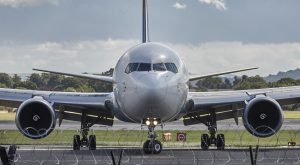 Boeing alone manufactured approximately 700 airplanes per year — and that’s only from one company! There are dozens of other airplane manufacturers, all of whom produce aircraft. When these companies design aircraft, however, they must consider several things, some of which include the following.
Boeing alone manufactured approximately 700 airplanes per year — and that’s only from one company! There are dozens of other airplane manufacturers, all of whom produce aircraft. When these companies design aircraft, however, they must consider several things, some of which include the following.
Regulations
Not surprisingly, aircraft manufacturers must consider regulations when designing aircraft. The Federal Aviation Administration (FAA) has strict rules regarding this process, and failure to comply could result in costly fines, penalties and other corrective action enforced. Even some airports have regulations on things like the maximum wingspan of conventional aircraft to reduce the risk of a collision during taxiing.
Financial
Building aircraft isn’t cheap, so companies must consider the cost and other financial factors during the design process. Air India recently sought funding to build seven 787 Dreamliners, announcing a new cost of roughly $110 million per plane. While that may seem costly, it’s actually 43% cheaper than the current list price of $194 million. If a company wants to build airplanes, it must secure the necessary funding, which as you can see isn’t cheap.
Purpose
Arguably, the single biggest consideration to make when designing aircraft is the purpose — what’s the intended purpose of the aircraft? Commercial airliners, for instance, are typically designed to carry passengers and/or payload across long distances. A fighter jet, on the other hand, is designed to provide maximum maneuverability and firepower. Fighter jets may also be designed to take off and land on very short runways for use on aircraft carriers.
Environmental Impact
In the past, environmental impact wasn’t much of a concern for aircraft manufacturers. This has since changed, however, with more and more companies taking a proactive approach towards designing planes that produce less carbon emissions. Additionally, there’s been some concern about the environmental impact from noise created by airplanes, promoting companies to use new materials and design processes to make them quieter.
Safety
It’s no secret that flying is safer than traveling by car. In order to maintain this sense of security and safety, however, aircraft manufacturers must consider safety when designing planes. Elements such as bird strikes, turbulence, thunderstorms and human error can all prove hazardous to an aircraft and its passengers. Hazards such as these and others must be carefully considered during the design and subsequent manufacturing process.
These are just a few things that aircraft manufacturers must consider when designing a plane.



